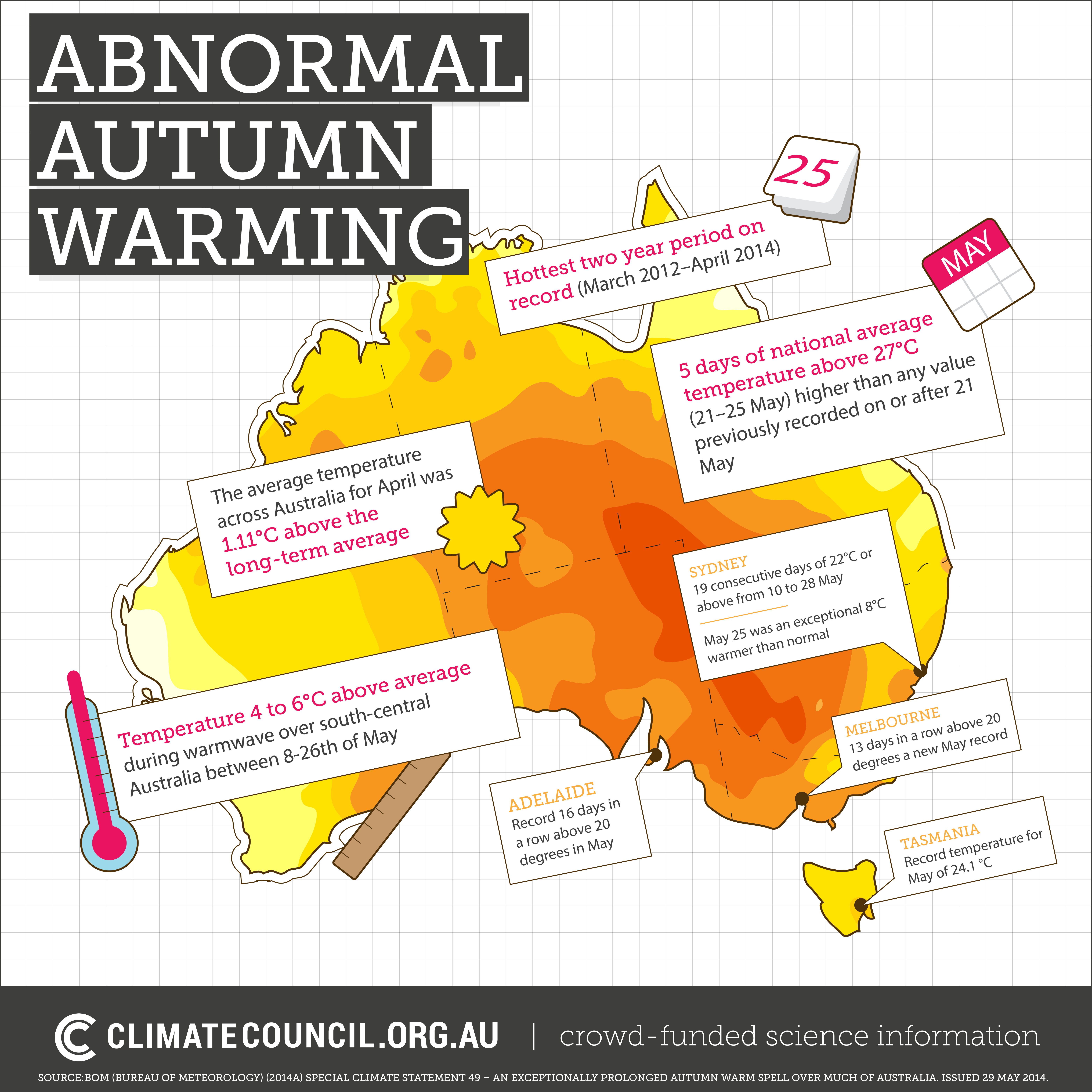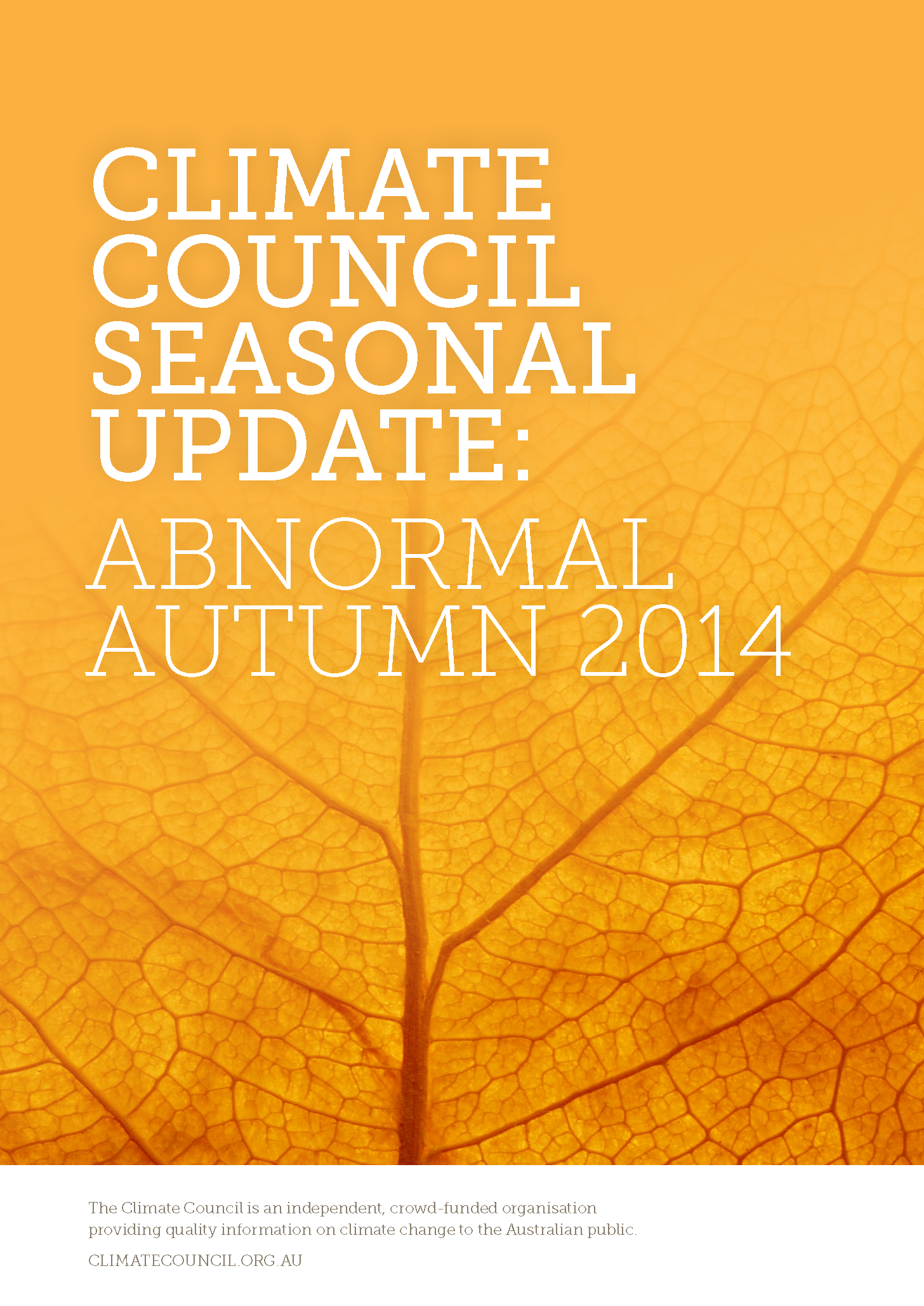As global temperature continues to increase, extreme weather records keep tumbling across Australia.
Last year – 2013 – was our hottest on record, ushered in by the record-breaking summer of 2012/2013. Extreme high temperatures haven’t been confined to the summer months. September 2013 saw a mean temperature 2.75 oC higher than the average, setting a new monthly record by more than a degree. Temperatures in October were also much higher than average (+1.43 oC), priming conditions for an early and destructive bushfire season in New South Wales. Hot on the heels of these unprecedented events, the summer of 2013/2014 broke 156 extreme weather records over 90 days across the nation.
Now the exceptional heat has continued into the autumn of 2014. The average temperature for April 2014 was 1.11 oC above the long-term average, and continuation of abnormally warm temperatures into late May has delayed the onset of winter conditions across southern Australia. A remarkable, prolonged warm spell occurred over the period 8-26 May, with daytime temperatures 4 to 6 oC above normal over much of south-central Australia, extending from South Australia and northwest Victoria into Queensland and the Northern Territory. The 24-month period ending with April 2014 was the hottest two-year period on record, with an average temperature 1.16 oC above the long-term average, easily eclipsing the previous 24-month record set in the 2002-2004 period.
With the continuing plague of abnormally high temperatures across the continent, the influence of climate change can be felt now. The intensity and frequency of many extreme weather events in Australia is increasing, with serious and costly impacts on our communities, infrastructure, economy, and the environment.
SIX KEY FACTS
- Exceptionally warm weather continues. The average temperature across Australia for April was 1.11oC above the long-term average (1961-1990), and May continued the trend of abnormally high temperatures.
- A prolonged warm spell occurred over the period 8-26 May, with daytime temperatures 4 to 6oC above normal over much of south-central Australia, extending from South Australia and northwest Victoria into Queensland and the Northern Territory.
- The 24-month period ending with April 2014 was the hottest on record for any two-year period, easily beating the previous record set in the 2002-2004 period. The 24-month period ending with May 2014 will likely exceed this newly set record.
- The climate system as a whole is heating up, and emissions of greenhouse gases, particularly from fossil fuels like coal, oil and gas, are the primary cause.
- Temperatures are projected to continue to increase, with more extremely hot days and fewer extremely cool days. A further increase in the number of extreme fire-weather days is expected in southern and eastern Australia, with a longer fire season in these regions.
- These trends can be turned around. Australians have an opportunity to rapidly and significantly reduce our CO2 emissions to help stabilise the climate and halt the current trend towards more extreme weather events and hotter average temperatures.

If you think this is important, hit share to help us get the information out!
